There are trends in architecture in the same way that fashion, film and music have their moments. But some date faster than others and the measure of a good architect is one that eschews trends in favour of best utilising the location of a house to create something really special.
Architect Mícheál de Siún's artful optical illusions have helped to conjure up a magical home in the north Co Dublin seaside town of Skerries.
The Victorian red brick has been transformed from a dark house into one that reflects light into its new and existing spaces while creating theatrical shadow play that changes as the sun traverses the sky.
Using the RIAI website’s architects list, its owners, a musician and an animator, shortlisted those whose work they liked and hired de Siún Architects, a small practice that excels at adding individuality to its contemporary style.
He got us from day one, says the musician. “We wanted a modernity that would reveal the house’s historic character, a New York loft, minimalist feel with warm textures such as exposed brick walls.”
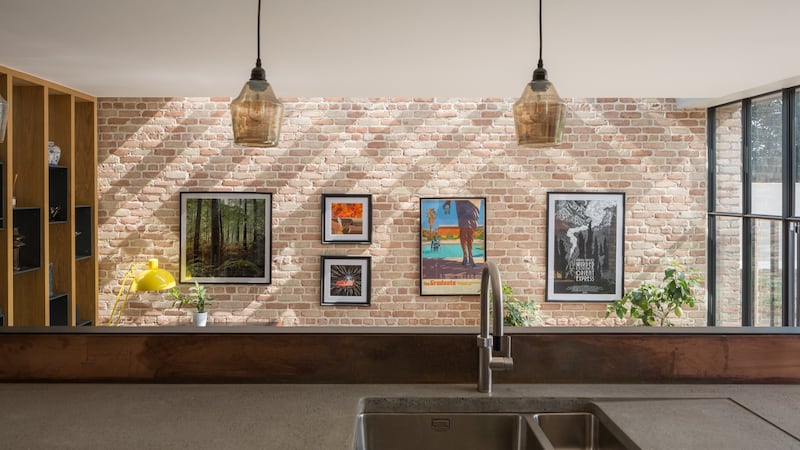
But while the house had fine features, it was in poor condition. The first thing de Siún suggested was insulating its interior with Hemp Build, a breathable material that eliminated any draughts.
The roof also needed attention and it was while up in the attic that he discovered that you could see the sea from this level and suggested amending the original plans to factor in the view.
One year after moving in, the sizeable hall, which has a leaded glass fanlight, and its impressive ceiling heights that extend beyond 3.5 metres are now painted in Colortrend’s Wild Garlic.
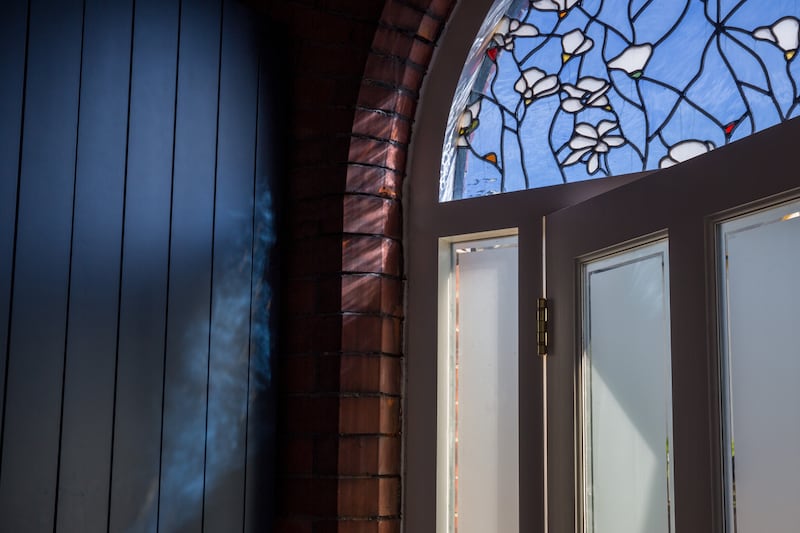
Ditto the lofty feeling in the reception rooms. To the front is the living room, a fine space with a bay window and a falcon chair and footstool by Sigurd Ressell from the Vintage Hub. Its walls wear Farrow & Ball's Stone Blue. From here you can see all the way through the house to the garden. Interconnecting doors, picked out in a soft white, as is much of the woodwork, lead through to the formal dining room whose walls wear Huntsman, a spooky spider-grey green, also from Colortrend.
The back window here has been replaced with an opening that takes you through to the extended part of the house, where a vertical half wall of open steel and oak shelving runs from ceiling to floor and allows you peek a boo views of the contemporary back.
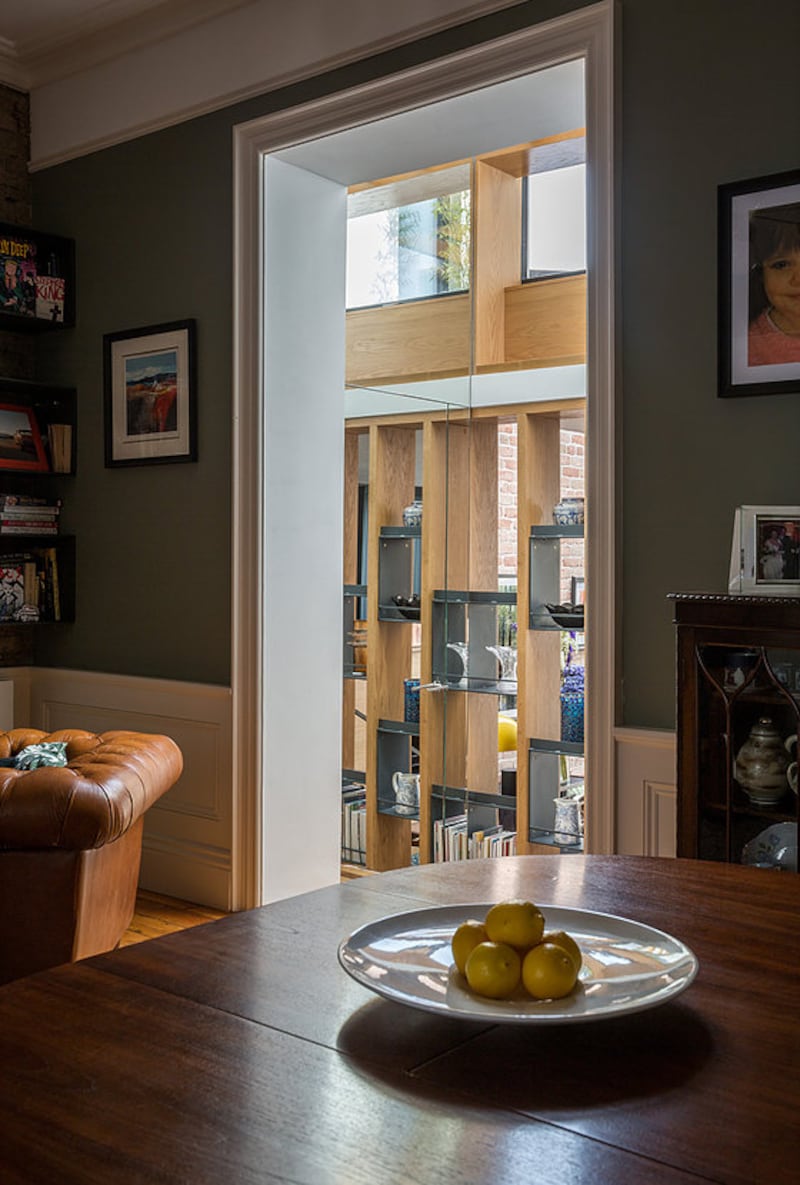

The shelving plays a decorative role and is filled with objects, vases and books that have been collected by the family, but its principal role is to draw light into the dining room from a lantern roof light above. Supplied and fitted by the Folding Door Company, it has an oak and mirror surround that plays with depth of field and size, and so appears far bigger than it actually is. It is an effective but understated way to deal with the problem of a dark back room caused extending out beyond it.
De Siún describes the shelving as a gallery and at one end is a fully mirrored door that conceals the functionality of the property’s utility room in a very glamorous fashion. Turn the other way and you will come to the kitchen: a rectangular space which was once dark and introspective but has been transformed by replacing the end wall with a full-size glazing panel that makes it bright and airy.
The dark units were made by Marron Kitchens and Cabinetry for builder, Stillman Building Contracting.
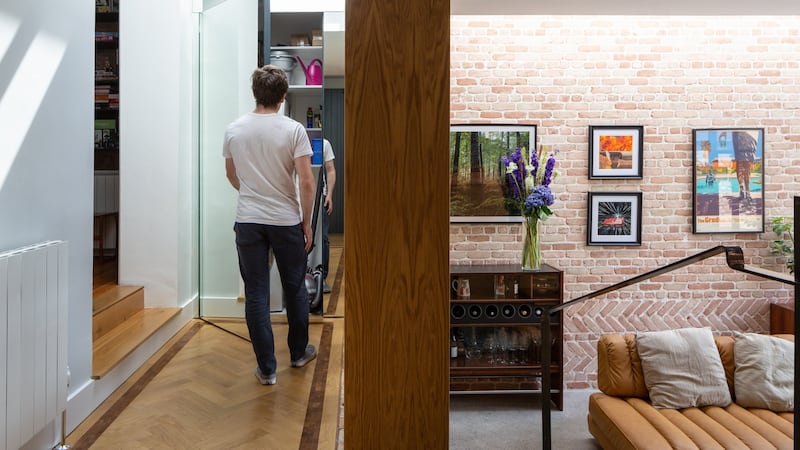
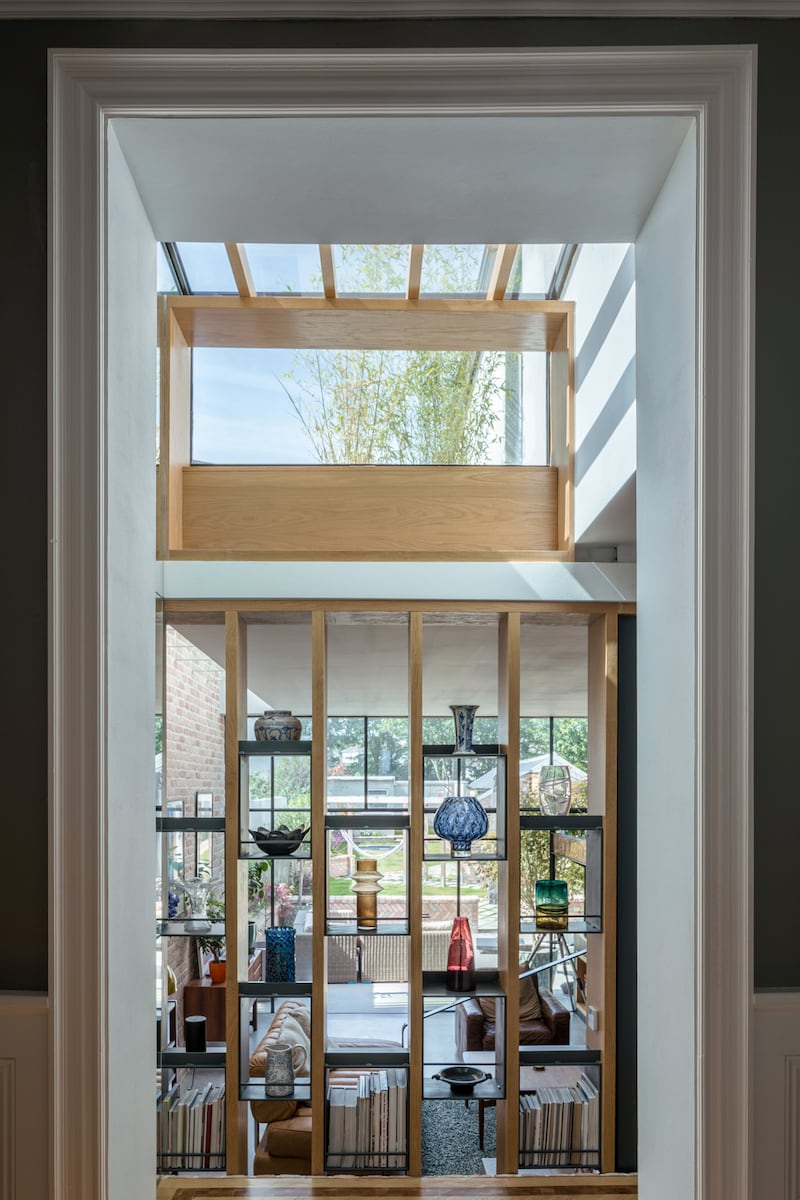
The room has golden oak parquet underfoot, supplied by Dungannon-based Hagan Flooring and laid out in a herringbone pattern that has a 6cm end grain border, designed to look like a mat, de Siún explains. Each side of the galley-style set-up has a different counter top. Green marble, from Leinster Stone, covers those units where the copper Elica Dolce cooker hood hangs above exposed original red brick while the cast concrete counter on the sink side has a copper splashback which will become patinated with age.
In the extended area, the space to the left of the return, the floor levels were dropped by about half a metre and now emulate the lofty ceiling heights of the original part of the house. Shallow concrete steps lead down from the kitchen to the family room. These were cast by the builder who came up with the bright idea of greasing the edges in Cookeen, a vegetable fat that comes in a block format and was once a kitchen staple traditionally used in making pastry and baked goods, to help create the ultra sharp form of the steps you see.
A roof light runs the depth of this room, with its battens clad in mirror on each side to deliver a gorgeous criss-cross effect of shadow play onto the bonded red-brick wall. This replicates the bond used in the original part of the house so that “it feels like its been there forever,” says de Siún and is a very subtle way of weaving the old and new together.
In the family room there is a tan leather sofa by Swiss De Sede sourced from Kirk Modern in Blackrock and a rosewood louvre-door McIntosh sideboard and a Heltborg cocktail cabinet, just some of the pieces bought from Killian McNulty who runs The Vintage Hub and Mid-Century Modern from his warehouse in nearby Lusk. McNulty stocks all manner of American marquee names as well as sourcing across the UK and Europe. The TV is concealed behind a cabinet with a built-in sliding door that glides back to reveal the screen.
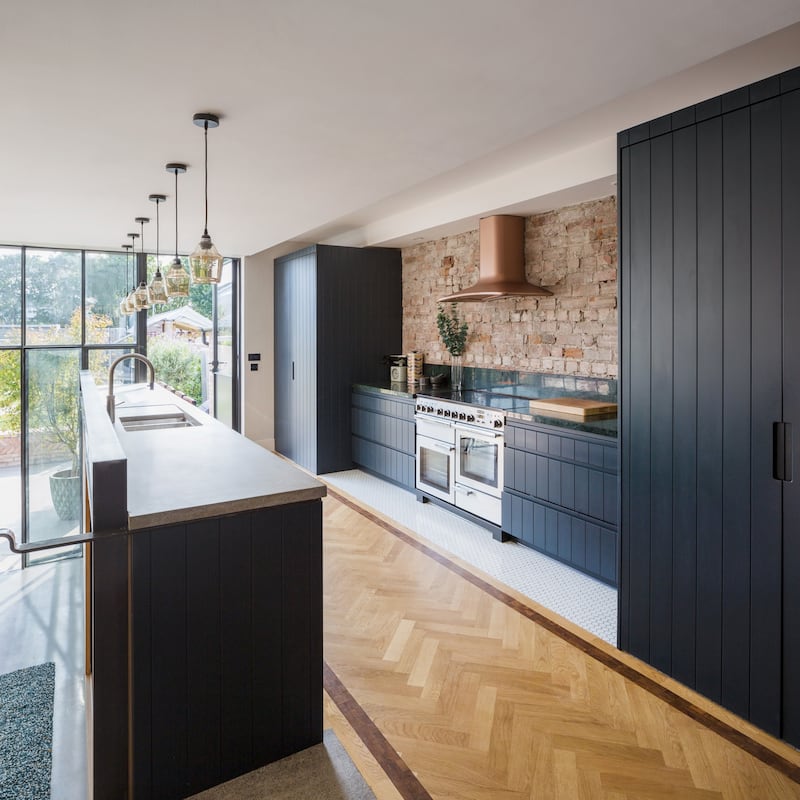
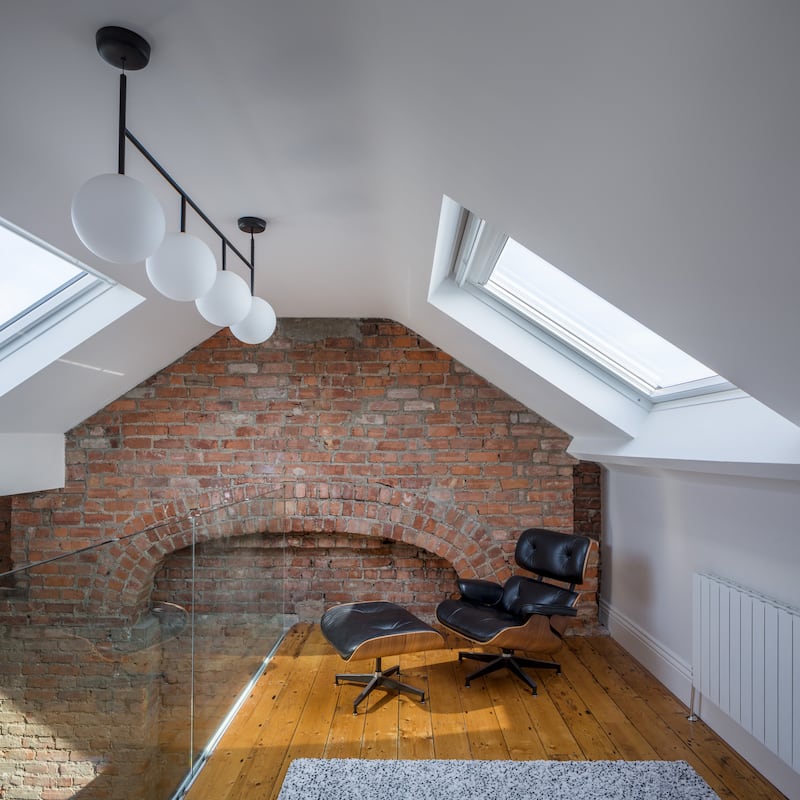
The gable end of the new-build part of the house is home to a steel and glass wall made by KCC Architectural. Its slim, fold-back doors echo the interconnecting doors of the reception rooms. Each pane also frames the garden and connects the property to the outside, even on inclement days when you don’t want to venture out.
The master bedroom is on the hall return where the ceiling was raised and the windows increased in size to bring in even more light. Here there is a very modern take on traditional shutters, a simple two-panelled system that folds back into a niche to the left of the window so that it sits flush with the wall.
In the en suite bathroom there is a frameless hinge in-line shower stall by Merlyn that has a back wall detail clad in fish-scale tiles from Project, a subtle way to fuse fashion and Skerries’ fishing port past.
On the first floor are three bedrooms. The architect added a family bathroom between two of the rooms and these belong to the couple’s two children, aged eight and 10. The largest of the three rooms is now a study where there is access, via a cantilevered, floating steel staircase, by Fabweld Engineering to those aforementioned sea views. At the top of the stairs is glass-balustraded mezzanine level that was hived out of the attic, an idea that came up during the works when they discovered that you could see the see from this level. Exposing the brick revealed an arch detail and the sea views are visible through roof lights to the front of the property.
They had to get planning to install these, de Siún explains. “But the house now has sea views so we felt it was worth it.”
Here an Eames-style lounger and ottoman, sourced from CA Design, makes a strong style statement and it is where the kids like to do their homework. There is also a second space at this level that is used as a walk-in wardrobe. design.ie; stillman.ie; ste.ie
Share your home story: Have you recently extended or renovated yourhome? Or built a new home from scratch? We’d love to hear how you got on. Please email your story to homeanddesign@irishtimes.com


















